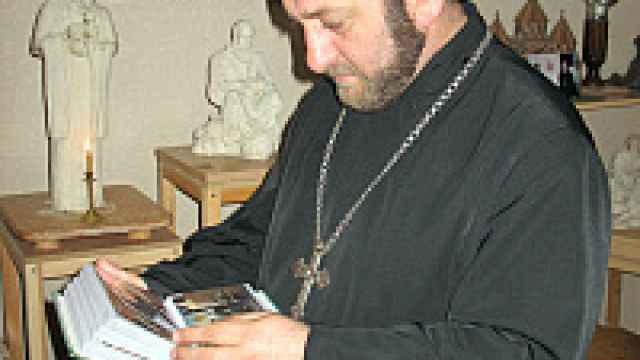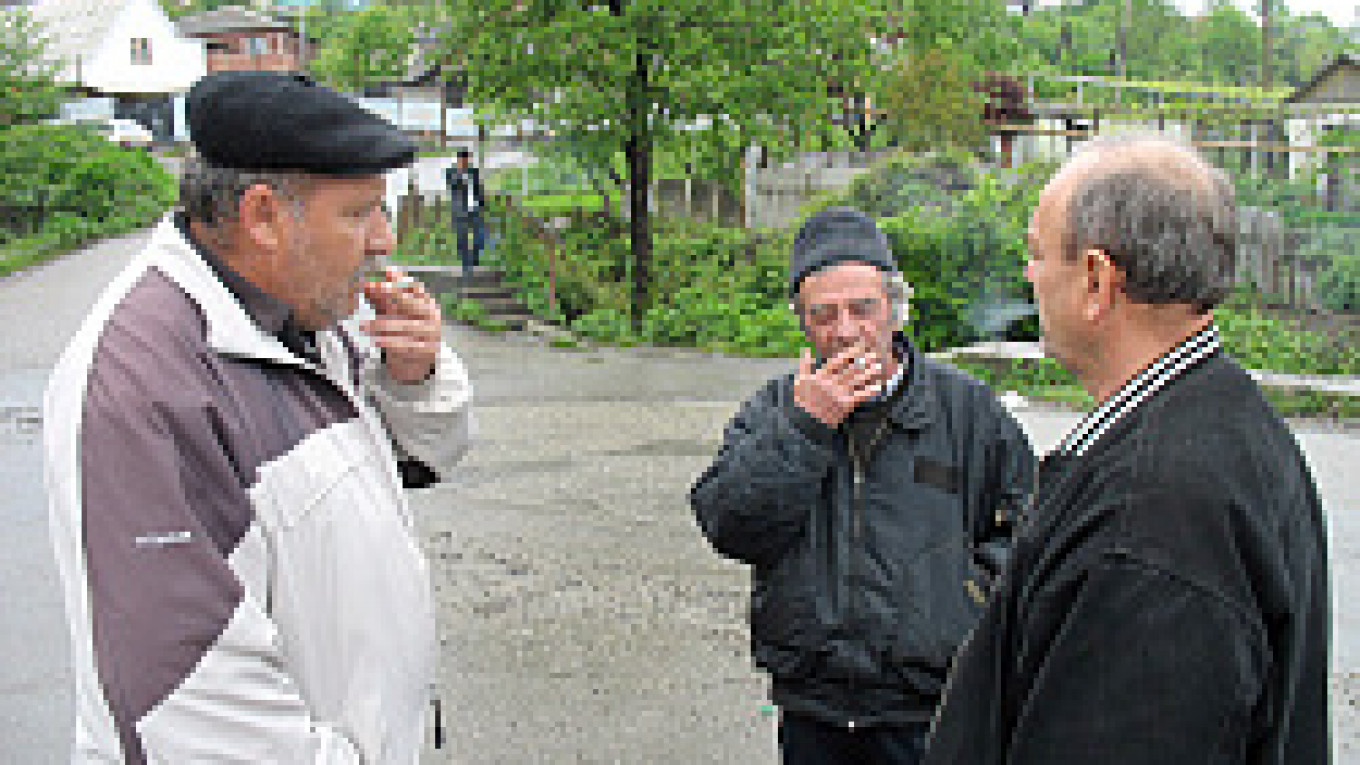"This is a terrible tragedy for us," Yeremyan, a subsistence farmer, said Thursday of the Armenian airliner that went down a day earlier off the coast of this Black Sea town.
The crash killed all 113 people on board and has left the local Armenian community stunned. With 125,000 ethnic Armenians in Sochi, out of a total of 400,000 people, the community is one of the largest in the country.
In Yeremyan's village of Baranovka, like many of the 20 mostly Armenian villages in the hills above Sochi, you don't have to look far to find people who knew someone, or knew someone who knew someone, on the late-night flight from Yerevan.
"The young woman who lived in that house was on the plane," said Yeremyan's friend, 69-year-old Vram Cholokyan, who wheezed as he pointed to a two-story, white concrete house. "She was about 22 and had a young child. I saw them walking around here just before Easter."
Both Yeremyan and Cholokyan have lived in the village their entire lives. Their families came here in the early part of the last century to flee the Turks. Today, they live off the fruits and vegetables they grow on small plots of land. Whatever they don't eat is sold at market, Cholokyan explained in a raspy, almost inaudible voice.
Grach Makeyan, deputy head of the Sochi branch of the Union of Armenians in Russia, said only 26 of those who died in the plane crash were permanent Sochi Armenians. Most of the victims, he said, were among the seasonal workers who come to Sochi from Armenia for the vacation season, which lasts until November.
"But we're all Armenians, even if we're not relatives," Makeyan said in his office at the Kamelia Hotel. "There aren't that many of us, so almost everybody knows somebody who died, even if indirectly through friends or neighbors. We are all in mourning. This will be a very, very difficult time."
A priest from Sochi's Holy Cross Armenian Church, known to all simply as Father Komitas, said all the Armenians in the community felt personally affected by the crash.
"Around 70 of the victims were citizens of Armenia and didn't have relatives here," Father Komitas, 38, said Thursday in his cramped office decorated with his own sculptures and drawings. "But this terrible tragedy is all of ours."
Makeyan noted that a close friend of his had invited several of the people on Wednesday's flight for a birthday celebration.
"Genocide, the war in Karabakh, the earthquake, and now this," Makeyan said. "Every time we get our heads just above the water, something like this happens. But we will stick together. Armenians are the people most capable of enduring tragedy after tragedy."
Because of their heavy smoking and poor diet, Armenian men tend to age rapidly. Many in their thirties look twenty years older.
Lev Dashchyan, 28, a cab driver from Sochi's Adler district, home to about 80,000 ethnic Armenians, said war, natural disaster -- and now the plane crash -- had exacerbated local Armenians' plight.
"My father-in-law's friend lost his wife and children in the earthquake," Dashchyan said, referring to the 1998 Spitak disaster. "They never even found the bodies. Then he remarried, and his new wife and child died in the plane crash. He has suffered a lot. He's 55, but looks like he's 70."
Dashchyan belongs to the Hamshen Armenian community. His ancestors, Makeyan said, fled across the Black Sea from Turkey to settle in the Krasnodar region and Abkhazia in the early 19th century. Hamshen Armenians comprise most of Sochi's Armenian population; while they speak an old dialect featuring many Turkish words, they are close to other Armenians.
 Carl Schreck / MT Komitas looking at a photo album. | |
Mardvitskaya, a Sochi native, and Muratyan, who came to Sochi from Stavropol three years ago to find work, said Wednesday evening that they had been frantically calling friends to find out if anyone they knew had been killed in the plane crash.
"I was on the phone all day," Muratyan said. "Everyone was calling trying to figure out who had heard what. Luckily, no one close to me was on the plane."
But Muratyan said a young Armenian woman who frequented the cafe had apparently died in the crash.
"Some customers came in today and told me she was on the plane," Muratyan said. "I remember her face clearly. She must have been around 21."
Other Armenians spent the better part of Thursday finding out that people who had been a part of their lives for years were now gone.
Flipping through a photo album, Father Komitas turned to a group picture of several of his congregants, pointing to a middle-aged blonde woman.
"She came to church regularly," he said of the woman, who had been on the flight. "It's important now that we find the bodies so they can be put to rest, hopefully in Armenia, in their homeland."
A Message from The Moscow Times:
Dear readers,
We are facing unprecedented challenges. Russia's Prosecutor General's Office has designated The Moscow Times as an "undesirable" organization, criminalizing our work and putting our staff at risk of prosecution. This follows our earlier unjust labeling as a "foreign agent."
These actions are direct attempts to silence independent journalism in Russia. The authorities claim our work "discredits the decisions of the Russian leadership." We see things differently: we strive to provide accurate, unbiased reporting on Russia.
We, the journalists of The Moscow Times, refuse to be silenced. But to continue our work, we need your help.
Your support, no matter how small, makes a world of difference. If you can, please support us monthly starting from just $2. It's quick to set up, and every contribution makes a significant impact.
By supporting The Moscow Times, you're defending open, independent journalism in the face of repression. Thank you for standing with us.
Remind me later.


